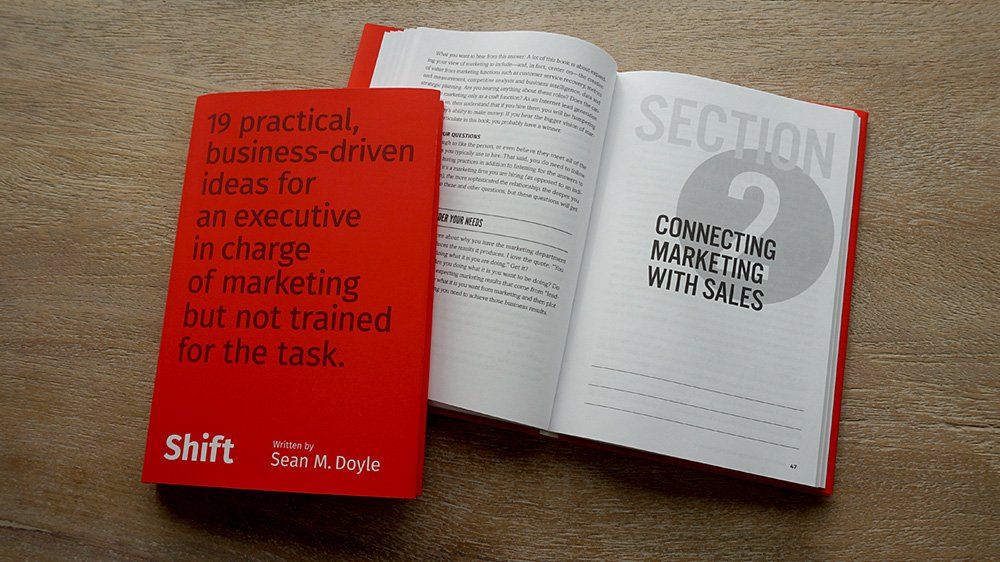Brand Strategy Basics for Small Business
Successful companies understand that the business is focused on company goals and that their brand is focused on customer goals.
The problem is that many company leaders don’t understand that their brand strategy (a long-term plan to outmaneuver their competition) must align with and support their business strategy (leadership, operations, sales, performance, HR, marketing, etc.) to sell more products and services to consumers for a more significant profit.
Brand strategy is the companion to business strategy that aligns how a company (leadership and employees) shows up in the marketplace (with who they are, what they do, and why it matters) to create value for who they show up for (customers).
Brand Strategy is part of the long-term business plan that draws customers to the company through radical differentiation to get more people to buy at higher prices. Sales and marketing create revenue, brand strategy creates and retains value for the company and customers.
Marketing is a tactical business function that supports the goal of brand strategy: to create demand from customers who buy goods and services that add value and meaning to their lives over the long term at higher prices.
You can begin moving toward brand and alignment by asking yourself and your team these five fundamental strategy questions:
- Why are we in business beyond generating profit?
- Who are the people we serve?
- Where will we compete? We call this category strategy, an alignment between what we offer, who we service, and the problem it solves.
- How will we win? Are we radically different enough so people choose our brand?
- How will we grow?
The brand strategy defines a brand’s character, culture, and consumers:
- The category in the marketplace,
- Why it exists, its unique point of view (POV),
- Its audience (the mission-minded people who share and talk about it),
- Its desired position in the consumer’s mind,
- The brand's distinctiveness, core beliefs, mission, vision, guiding principles (often referred to as brand values*), and
- The brand narrative (or messaging).
The four core elements of any brand
- Vision: A different future guided by a company’s reason for being beyond profit and its guiding principles.*
- Character: Shared values and personality that give people a reason to trust a company.
- Culture: How a company puts values into action and treats customers and employees.
- Voice: How a company expresses its vision, character, and culture through design, branding, communications, and experience when it connects with people in the category and marketplace.
What’s the Point of Purpose?
“People buy your brand because of its purpose.”
That’s what some well-known authors and agencies want you to think.
Did you buy your last tube of toothpaste or automobile because of the manufacturer’s purpose statement? Probably not. My motivation for toothpaste is clean teeth, and my top priorities for my car are heated steering and heated seats.
Consumers may not care about your brand’s purpose or the company’s “why,” even if your product or service makes a difference in their lives.
“The idea that the brands we use are intensely important to us and that we spend time and energy sussing out their meaning and trustworthiness is a deeply ingrained marketing fantasy. For most people, their relationship with most of the brands they buy is shallow, transactional, and contingent. Brands are not nearly as important or meaningful as we marketers would like them to be.” — Bob Hoffman
People might buy in to a company’s vision because that vision is of an identity or future where they want to be.
The point of a company’s brand purpose isn’t to get people to buy more. It’s to get people to buy in more. Purpose keeps a company focused on what matters and why they are in business.
A company’s purpose is the reason it exists beyond generating profit.
The idea of putting purpose into practice has never been more relevant than now, especially for corporations with any ties to countries or causes misaligned with most people’s values. If protecting and enriching people’s lives isn’t at the core of your purpose, your mission and vision are too small.
“It’s possible your brand’s sense of self-worth is higher than it should be.”
– Scott Tennant
When you cast a larger vision and expect people to join you in the mission to achieve it, don’t be surprised if they aren’t ready. Give them time to grow into the new vision by helping them align their purpose with your company’s larger purpose.
Meet Your Unique Buying Tribe, formerly Known as Customers
Many companies struggle to sustain their business because they prioritize brand-building. That approach is no longer relevant. Instead, companies need to make creating customers a priority.
Customers build the brand, and the brand sustains the company.
People love to buy but hate it when companies sell to them. It’s best to be relational before you ask for the sale. Avoid hype, be relatable. Don’t squander your opportunities without investing in winning trust.
When making a buying decision, people pursue options that fit their needs and values. People buy because a product solves a problem or helps them achieve a goal (or need), bonus points when the value it creates for the buyer aligns with personal values.
What if a buying tribe is more about survival than about aligning with other people who think, believe, and act similarly?
What happens when your branding inspires people to move from surviving to thriving?
When people are in survival mode, buying choices are primarily driven by familiarity and availability. You’re not competing with other brands. You’re competing with people’s motivations, behavior patterns, and preferences. For people whose mental state is about thriving and who are intentional about what they believe and why they buy, buying preferences are driven by perceived value (and shared values).
People with similar goals, beliefs, and behaviors make up your buying tribe. People power your company. People are your brand’s most important and primary touchpoint and the ultimate beneficiary of everything your brand stands for.
Meet Your Customers Where They Live
Where you compete and how you show up are inseparable.
Brand strategy is essential for business strategy. The brand strategy helps you position your company so you’re not competing with category leaders. You’re outmaneuvering them by using their strengths against them to your advantage.
Your market exists within your category, and your customers (your buying tribe) live within the market. The most effective way to identify your potential customers and define your market is to narrow your focus.
If your brand can own its category, it has a competitive advantage. If you can’t own your category, then do two things:
- Stake a claim to the category territory you want to own.
- Act like you own the category in which you compete.
Your brand (representing your company, its people, and its reputation) exists within a community context. How you show up matters as much as where you show up. How your company behaves and treats people is essential for building the brand.
Brand character matters. How you show up will demonstrate how well your brand views the world (worldviews), behaves within society, and connects with people. If employees are not good stewards of the brand, people will call your brand out when it speaks and acts in a way that is contrary to the stated and perceived values that people believe about your brand.
Brands exist in the community. Companies are peer-to-peer entities within communities and between competitors. Brands within the company’s brand architecture may have interconnected tribes and loyalties. In short, people watch and hold companies accountable for how they treat people, the planet, and the profit they earn. One wrong move or poor choice can bring financial ruin.
Consumer money follows their values. Consumers reward or punish brands based on perceived or actual injustices, practices, and behaviors. That’s why it’s critical for your brand’s values to align with your buying tribes (aka your customers), goals, aims, mores, and beliefs. This accountability, what some call “cancel culture,” is similar to an “honor-shame” culture.
What is the Difference Between Brand and Branding?
I briefly talked with a small business owner who asked: “What do you think of our brand?”
He referred to the 30 ft. backdrop behind his trade show display, filled with dozens of tiny photos that created more visual noise than coherency. I took a long look and commented, “I don’t know enough about your company to comment on your brand. If I may be blunt, your trade show booth branding lacks focus with all these images.”
The owner replied, “What? We just redid our branding. We have a very artsy person.”
A logo is not your brand. A trade show booth is not your brand. A brand is an idea about your product, service, or organization, an idea that lives in someone’s mind, built on intangible ideas they form when they hear about and interact with your company. A brand is a gut feeling, and the last experience a person has with your company is your last best chance to maintain their perception (i.e., the gut feeling) of your brand.
Just remember this: A brand isn’t what the company says it is; it’s the story people believe and share about their experience with your company, products, and people.
A Logo is not a Brand
A logo is part of a company’s visual storytelling that reminds people that the company exists. But the logo is not your brand; it’s a visual expression that helps people identify and remember the brand.
People don’t always make products and benefit from their primary criteria when purchasing. Sure, they’re essential, but research shows that consumers base 80-95% of decision-making purchases on subconscious triggers. We buy subconsciously, respond to the decision emotionally, and justify it with logic. What people want is at a deeper level: What’s the value of your brand for me? Don’t solely focus on features and benefits. Help people discover how your brand adds value to their life.
Michael Harris writes:
“Our subconscious/intuitive decision to buy is then communicated to the conscious mind via an emotion. The conscious mind then searches for rational reasons, and that’s how we complete the circle: We justify our emotional signals to buy with logical reasons. Phew, the illusion is now complete that the conscious mind that we identify with is in control so we can feel safe and secure.” — Michael Harris
Harvard Business School professor Gerald Zaltman says that 95% of our purchase decisions unconsciously occur. Understanding how consumers respond to products and services can help companies design more usable products and more satisfying experiences. That’s how brands add value.
As I outlined in “Raise Your Voice: A Cause Manifesto,” your brand messaging must both touch the heart and speak to the mind to successfully lead people through this cycle.
Branding is the practice of nurturing people’s impression of your product, service, or company so it’s relevant, meaningful, and memorable. The discipline of branding continually answers these four questions:
- Who is it for?
- What is it for?
- What difference does it make?
- What value does it create?
“Who is it for?” and “what is it for?” speak to relevance. The difference it makes (or why it matters) speaks to value and meaning.
The value a brand creates creates a legacy. What’s the one thing for which you want your brand or company to be remembered in the near term and the long run? That one thing drives your impact and requires unwavering focus. Don’t compromise.
Great brands don’t start with purpose. They begin with focus: Who you are, what you do, and why it matters. But without purpose, you’ll never stay focused.
“… most successful organizations are those that… can transform business performance for the benefit of people, planet, and profit (in that order)—in other words, mutuality.” —Putting Purpose into Practice: The Economics of Mutuality
A Simple Brand Strategy
How your company grows depends on one thing. If you don’t have the time or discipline to invest in brand strategy, there is only one strategy you will ever need.
For your company to win the trust and appeal to people’s hearts and minds, there’s one thing you must do above all else:
Stop focusing on your branding. Create followers, not brands.
Wait, what?
Instead, focus all your attention on your customer and work your way back to your brand. Your brand must focus on your customer’s goals.
It’s simple, and it works.
The more your company grows, the more challenging it is to sustain this strategy. That’s why you need to keep it simple:
- Identify and connect with your ideal customer.
- Do everything you can to win and earn trust.
- Don’t do anything to break that trust.
Please don’t make your brand strategy more complex than it needs to be. With complexity comes confusion. Strive for simplicity and memorability.
Focus on who your customer is (their identity), what they want (their goals), and how they behave and belong in the community.
Figure that out first, and then align your brand with your customer. Reduce complexity, increase simplicity, and strive for clarity.
That’s what brand strategy is all about.
Do you have a hard time explaining what your company does or why your brand matters to people?
If you struggle to grow your business, you’re not alone. Aespire can help you create a clear message and brand that helps you grow your business. Contact us today for a consultation with a StoryBrand Certified Marketing Guide.
Get a Free Comprehensive Marketing Assessment
Stop hoping your marketing will sort itself out.
- Complete this free assessment in 15 minutes.
- Review your custom report (and schedule a 30-minute review) to diagnose what’s happening.
- Create an action plan to get your marketing back on track.

Do you feel powerless because you’re competing against deep-pocketed competitors? Call today to design a strategy to capture demand, create new customers, and grow your business.
Aespire Branding
5061 N Abbe Rd, Suite 2
Sheffield Village, OH 44035
Phone: (440) 322-5142
Email Aespire
Aespire is a Woman-Owned Small Business Enterprise (WBE)
Many service and solution companies struggle to explain how their expertise helps customers solve problems and achieve their goals. Aespire guides leaders with brand strategy, design, and marketing so they can start, grow, and sustain thriving teams and businesses.
We're committed to helping people flourish, businesses thrive, and communities prosper.
Privacy Policy | Terms of Use | Accessibility | Privacy Settings | Site Map
As an Amazon Associate, we earn from qualifying purchases on this and other affiliate programs.
© 2024 Aespire Cleveland StoryBrand Guide | Ohio Marketing
|
Brand Strategist | Built on
Aespire Websites Made Simple







